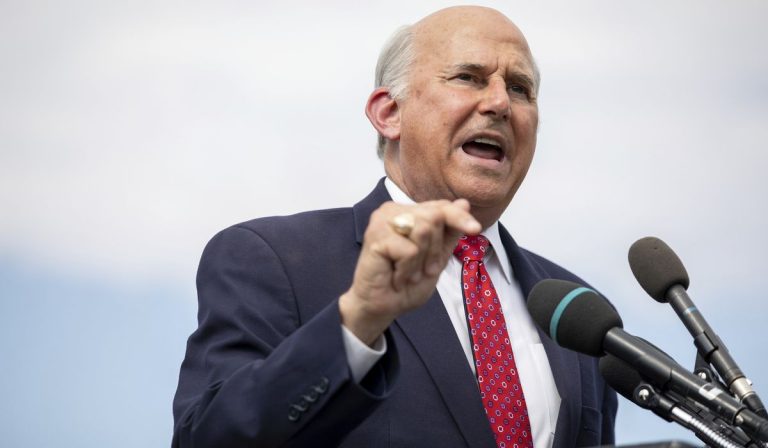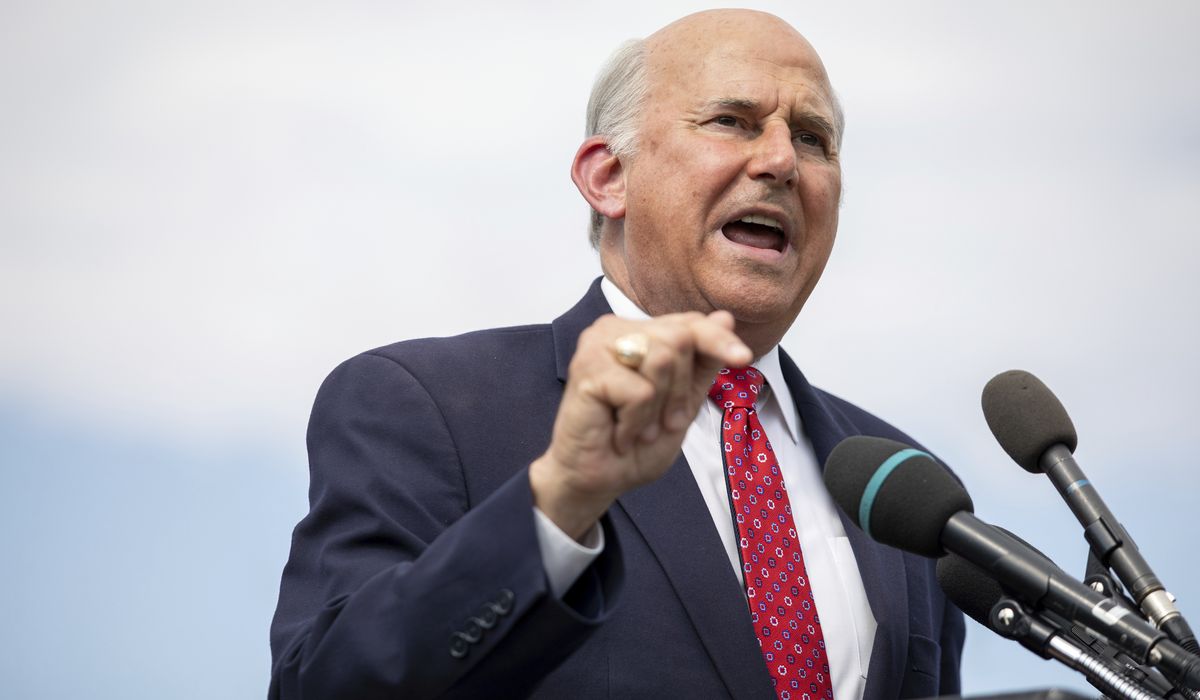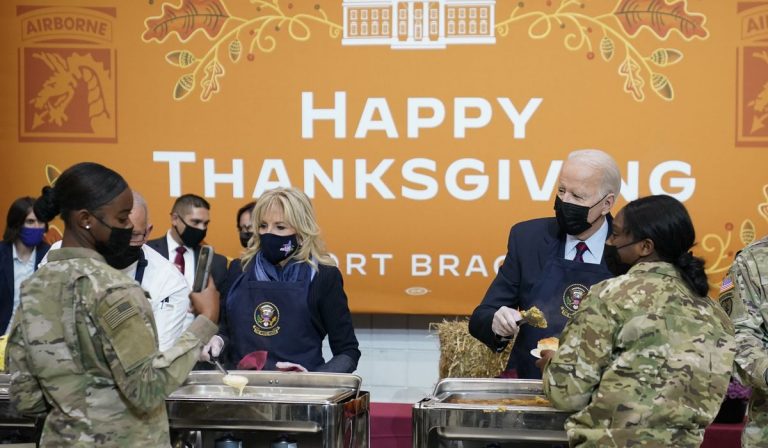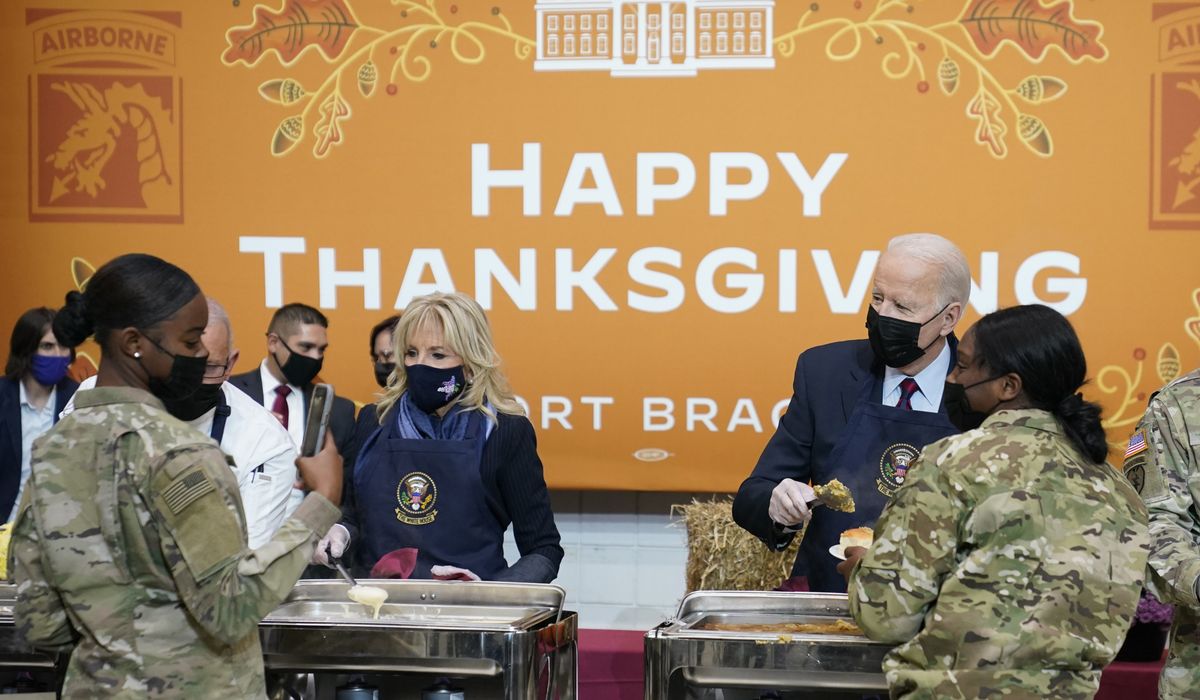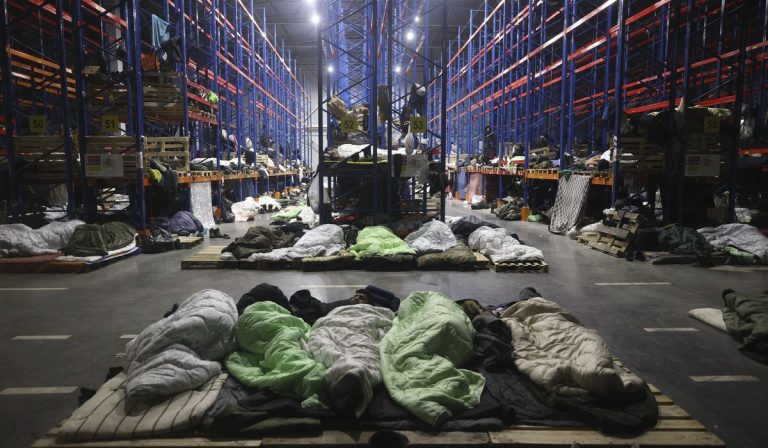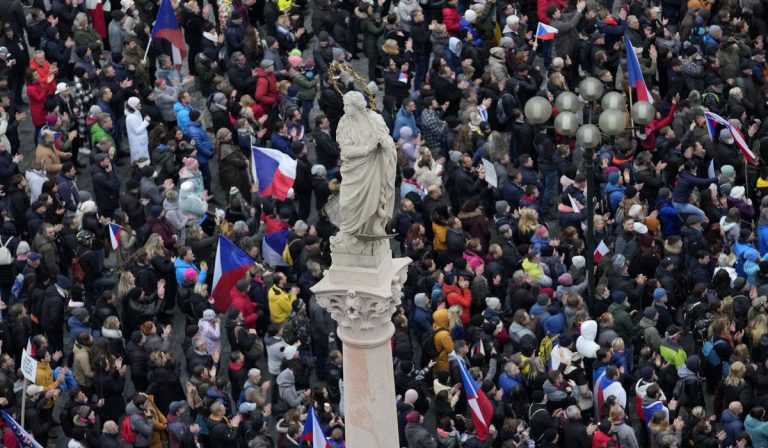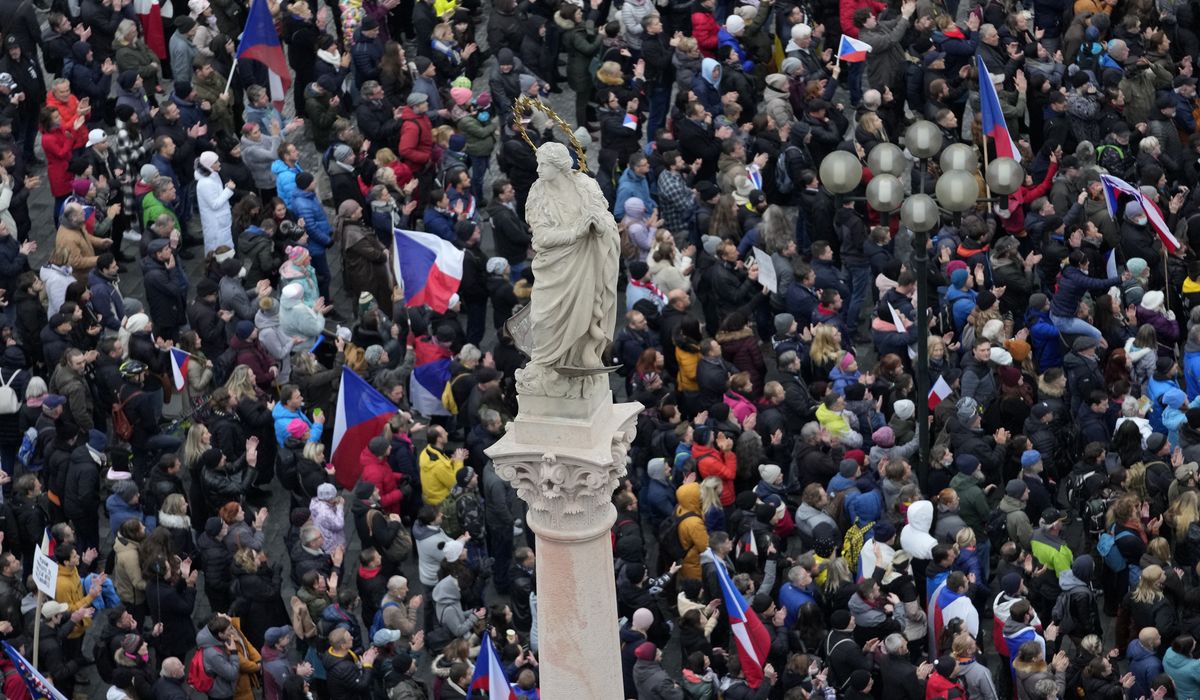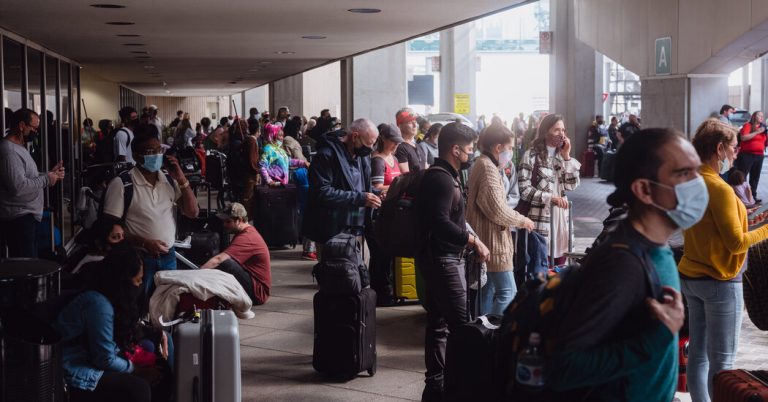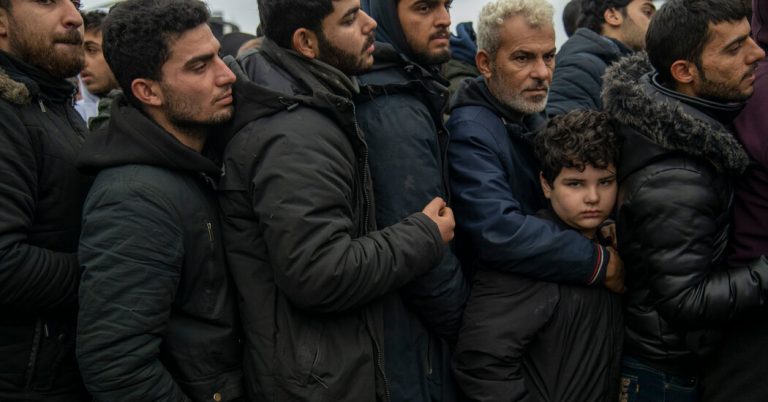
SAN JOSE, Calif. — After weathering months of accusations that she lied to get money for her blood testing start-up, Theranos, Elizabeth Holmes, the embattled Silicon Valley entrepreneur who is on trial for fraud, sharpened her defense on Monday.
In just under two hours of testimony, Ms. Holmes pushed back against accusations that she had lied about Theranos’s work with drug companies. She also pointed the blame at the scientists and doctors who had worked at her start-up, saying she believed what they had told her about Theranos’s technology.
And throughout it all, Ms. Holmes’s defense bolstered the idea it has been pushing since the start of the trial: She may have made mistakes, but failure is not a crime.
“We thought this was a really big idea,” Ms. Holmes said about Theranos’s machines, which she once promised could run a long list of medical tests from just a few drops of their blood.
It was her second day of testimony in a trial that has gripped Silicon Valley and become a referendum on start-up culture and just how far entrepreneurs will take their hubristic claims of changing the world. For her lawyers, the idea on Monday was to show the kernel of truth that may have existed in some of the most blatant misrepresentations that prosecutors attributed to her.
Ms. Holmes, 37, has been charged with 11 counts of fraud and conspiracy to commit fraud. She has pleaded not guilty. If convicted, she faces up to 20 years in prison.
Her testimony has been the star attraction at a trial where more than 30 witnesses have been called over the past three months into a San Jose, Calif., courtroom to testify. Ms. Holmes had watched the proceedings quietly, her expression obscured behind a medical mask. On Friday, the prosecution had rested its case.
Ms. Holmes is the rare Silicon Valley executive to be tried on fraud charges. While the world of tech start-ups is known for its culture of hustle and hype, few have risen as high or fallen as dramatically as Theranos — and even fewer of their leaders have been indicted on accusations that they lied to investors. Over 13 years, Theranos raised nearly $1 billion in funding, valuing it at $9 billion. After The Wall Street Journal revealed in 2015 that Theranos’s technology did not work as advertised, the company unraveled. It shut down in 2018.
Ms. Holmes’s decision to testify is a risky one that shocked the courtroom out of its Friday afternoon lull last week. She has opened herself up to cross-examination by prosecutors and also risks perjury.
But experts have argued that she had no choice but to defend herself, given the evidence presented by prosecutors. That has included text messages that showed Ms. Holmes was aware of Theranos’s technology problems and testimony about faked demonstrations of its abilities. Prosecutors also revealed that after an employee, Erika Cheung, spoke to regulators about problems in the Theranos lab, the start-up hired a private detective to follow her.
“They think they are behind, and they have a smart, likable, young, attractive witness,” Neama Rahmani, the president of the West Coast Trial Lawyers and a former federal prosecutor, said of Ms. Holmes. “And she thinks she’s going to talk her way out of it.”
One key point made by prosecutors was that Theranos could never conduct more than 12 different blood tests on its own machines. It secretly used blood analysis machines from companies like Siemens to run most of its tests, but proclaimed it could do hundreds or thousands at various times.
Ms. Holmes’s lawyers have for weeks tried complicating the prosecution’s narrative. They have pointed to patents created by Theranos. They have hammered investors for not doing enough diligence on the start-up before eagerly writing checks to fund it. And they painted Ms. Holmes as inexperienced and unqualified to run a lab, directing blame for Theranos’s failure at those who were experienced and qualified.
But on the stand, Ms. Holmes presented herself as an impressive and ambitious chief executive when describing the early days of Theranos. She detailed a patent that bore her name for an early concept of the company, as well as the help she got from Channing Robertson, a respected scientist and Stanford University professor who joined Theranos’s board. She was relaxed and confident, smiling widely and nodding before answering questions.
On Monday, her direct examination continued in chronological order. Her lawyers walked through the details of preliminary studies that Theranos had done with a number of drug companies in 2008, 2009 and 2010. They also noted that Theranos’s technology had performed well in those early studies with Merck, AstraZeneca, Centocor, Bristol Myers Squibb and others.
Representatives from Pfizer and Schering-Plough testified earlier that they had evaluated Theranos’s technology and had come away unimpressed.
But the point of Monday’s testimony was to show that Theranos did work with drug companies rather than not at all. Ms. Holmes testified not only about the clinical studies but also about a study published in a peer-reviewed journal.
That strategy allowed her to focus on Theranos’s early successes and the conversations she had with each potential partner, while glossing over the outcomes of those conversations.
Ms. Holmes also tried to shift the blame, noting that she learned about Theranos’s technology from the scientists and doctors who worked in the company’s lab. She testified that she believed them when they said the technology worked. The implication: Ms. Holmes could not have intended to deceive investors if she believed the technology was real.
Prosecutors face a challenge in proving that Ms. Holmes intended to defraud investors. The push-pull between showing that she was aware of Theranos’s problems and that she simply relied on what others told her has been a recurring theme in testimony.
Emails between Ms. Holmes and Ian Gibbons, a former chief scientist at Theranos, also painted a rosy picture of Theranos’s technology.
“I understood that the four series could do any blood test,” Ms. Holmes said, referring to a version of Theranos’s machines, described by Mr. Gibbons.
Judge Edward J. Davila of U.S. District Court for the Northern District of California instructed jurors that many exhibits, including the emails between Ms. Holmes and her lab workers, should be taken as an indication of her “state of mind” rather than the truth of the situation.
Monday’s court session ended with Judge Davila again rebuking spectators over the volume of their typing, reminders of the many interruptions and delays that have plagued the trial since it began in August.
Direct testimony of Ms. Holmes is expected to last through Tuesday. She will then face cross-examination from prosecutors.

San Jose, Calif.
The jury filed out, but the lawyers continued to argue about what exhibits can be admitted. Robert Leach, a lawyer for the prosecution, said they were not given enough time to review the exhibits from the defense. Kevin Downey, Ms. Holmes’s lawyer, countered that this was more time than the defense was given.

San Jose, Calif.
Testimony will begin at 9 a.m. tomorrow and stretch until 4 p.m.

San Jose, Calif.
As the jurors filed out, Ms. Holmes attempted to make eye contact with each of them. Few looked up.

San Jose, Calif.
Ms. Holmes’s legal team showed another email of Theranos’s scientists and lab workers telling Ms. Holmes about what Theranos’s technology could do. She testified that her understanding of the company’s technology was based on what those experts told her — a key part of the defense argument that Ms. Holmes could not have intended to deceive investors because she believed the tech worked.

San Jose, Calif.
That’s it for today. The nearly two-hour delay has not been explained! Back in court tomorrow morning

San Jose, Calif.
Ms. Holmes testified about her interactions with Shane Weber, a Pfizer director who evaluated Theranos’s technology and testified earlier in the trial. He concluded that the company’s answers to his technical due diligence questions were “non-informative, tangential, deflective or evasive” and that Pfizer should not work with the company.
Despite Mr. Weber’s conclusion, Theranos used reports with Pfizer’s logo on them to solicit investment.
Ms. Holmes testified that Theranos continued to “talk” and also “interact” with Pfizer after Ms. Weber’s conclusions, including discussions about potential partnerships. She did not say whether any of those talks or interactions led to business deals.

San Jose, Calif.
Ms. Holmes testified about a “great call” a Theranos employee had with Constance Cullen, an immunology expert from the pharmaceutical company Schering-Plough.
“All in all, it was awesome, I think,” a Theranos employee wrote to Ms. Holmes in a 2010 email that was displayed in the courtroom. “Calling her every single morning for the last 3 weeks finally paid off…”
Ms. Cullen testified earlier in the trial. Her characterization of her conversations with Ms. Holmes: “There were what I’d describe as cagey responses or attempts to redirect to other topics of discussion.” Ms. Holmes had pitched Ms. Cullen on Theranos’s technology, but Ms. Cullen said in her testimony that she was dissatisfied with Ms. Holmes’s responses. “There was insufficient technical detail for us to be able to evaluate the technology,” Ms. Cullen said.

San Jose, Calif.
Mr. Downey asked Ms. Holmes about the results of Theranos’s work with GlaxoSmithKline. “I remember they thought our system eliminated the need for a lab,” Ms. Holmes said. The company continued to use Theranos machines in connection with clinical studies going forward, she testified.
For most of the first two months of Elizabeth Holmes’s trial, the mood inside the courtroom has been calm and quiet. Edward Davila, the mild-mannered judge overseeing the trial, has kept proceedings orderly throughout many hours of detailed testimony about Theranos’s inner workings and business dealings.
Each day, a small group of reporters and curious spectators wait in line to have their bags scanned by security before entering the beige, windowless courtroom. Inside, Ms. Holmes sits upright in a leather chair at a table with her lawyers, staring straight ahead.
Behind her in the gallery, her mother, Noel, typically sits in a reserved row with a rotating group of family and friends who have come in a show of support. Ms. Holmes’s partner, Billy Evans, is sometimes among them.
Attendees are assigned tickets for a limited number of seats, spaced out as a pandemic precaution. Everyone in the courtroom wears a mask except those testifying.
Reporters type carefully on laptops, wary of warnings from the judge that they must have a “silent keyboard.” One juror has complained that clacking noise from keyboards was distracting.
Regular attendees bring seat cushions for the hard wood benches — and to save their seats during breaks. When exhibits are displayed on two large monitors on the sides of the room, those paying attention squint and lean in to read. One reporter uses binoculars.
Ms. Holmes’s testimony on Friday afternoon sent a jolt of adrenaline through the sleepy room. Jurors listened intently. Reporters sent panicked messages to their editors. And the more dedicated spectators who hadn’t yet trickled out for the weekend sat up straight, craning to see Ms. Holmes plead her case.
On Monday, the courtroom was packed as Ms. Holmes testified for a second day and her defense began taking shape.

San Jose, Calif.
The break is over and court is in session. Ms. Holmes is back on the stand.
On Monday, Elizabeth Holmes, the founder of the blood testing start-up Theranos, aimed to rebut a key argument made by prosecutors in her fraud case: that she lied about her company’s work with pharmaceutical companies.
One of the most damning pieces of evidence prosecutors have presented against Ms. Holmes is that Theranos sent falsified pharmaceutical company validation reports to investors. Those reports displayed the logos of drug makers, which acted as proof that Theranos’s technology had been validated by them. During the trial, investors have testified that those reports helped persuade them to pour money into Ms. Holmes’s start-up.
But representatives from Pfizer and Schering-Plough testified that their companies had never validated Theranos’s technology. (Pfizer’s representative said the company had come to the opposite conclusion.) Nor had they approved of having their logos added to the reports.
On the stand on Monday, Ms. Holmes testified about studies that Theranos did with Merck, AstraZeneca, Centocor, Bristol Myers Squibb and others in 2008 and 2009. One exhibit displayed internal documentation about the success of some of this early work and showed a map of around a dozen cities around the world where Theranos’s machines were used for studies.
Kevin Downey, Ms. Holmes’s lawyer, also showed what he called a peer-reviewed journal that published the results of a study that Theranos did with Stanford University around this time. He did not mention the name of the journal.
In each example, Ms. Holmes’s understanding of Theranos’s technology was that “it performed well,” she testified. In some of the examples, Theranos was paid for its work in the studies.
Throughout her trial, Ms. Holmes’s defense team has tried making the case that there was some truth to what Ms. Holmes told investors.
“The reality of what happened at Theranos is far, far more complicated than what you have heard about Elizabeth Holmes so far,” Lance Wade, another of Ms. Holmes’s lawyers, said in his opening statement at the trial’s start in September.
The trial of Elizabeth Holmes has everything: a charismatic, attractive and youthful female defendant; celebrities; sex; vast sums of money; the long shadow of Steve Jobs; lives of real people at risk.
If it’s one of the most famous criminal cases ever to come out of Silicon Valley, it also sometimes seems like the only one. Prosecutors in Northern California brought 57 white-collar crime cases in fiscal year 2020. Even after accounting for the effect of Covid, cases have plunged from the peak of 350 in 1995.
Not every white-collar case is a tech case or related to start-ups, which means there are only a handful of times each year when someone in Silicon Valley is accused of a crime.
There are a lot of complicated reasons for this shortage of courtroom action.
A frequent explanation is that it is the fault of a lackluster U.S. attorney’s office in San Francisco. Few prosecutors come to the Bay Area to make their reputations, and those that do — like Robert Mueller 20 years ago — soon move on to better jobs. Mr. Mueller took over the F.B.I.
It’s not just a local issue. Fighting white-collar crime has been less of a priority for the Department of Justice since the Sept. 11 attacks brought fears of widespread terrorism.
And for all the growing awareness of the power of tech companies, there is little public demand to hold them accountable. When David Anderson stepped down as U.S. attorney for the Northern District of California early this year, he did an interview with a radio station. None of the questions from the host or from callers dealt with Silicon Valley.
Mr. Anderson, a Trump appointee, had talked about making Silicon Valley a priority for his prosecutors. His first public appearance was on a panel titled “White Collar Crime in a High-Tech World.” But he was in office for two years, too few to really make an impact. The district has had an acting U.S. attorney, Stephanie Hinds, since March.
Yet another reason is that Silicon Valley is a very rich place. That does not make government prosecutions impossible. But it ensures that top-flight defense attorneys can be brought in, making cases like Ms. Holmes’s neither short nor simple.
Finally, there is a sense in Silicon Valley that failure — whether a company that went under or an investment that was lost — is best kept in the family, far away from prosecutors, regulators and the media. Investors are supposed to be sophisticated, and a case like Ms. Holmes’s can reveal just how foolish and naïve they were. The same is true of employees.
Better to just forget about anything suspicious than allege fraudulent activity. After all, you wouldn’t want to miss out on the next opportunity.

San Jose, Calif.
The court is taking a break until around 12:10 p.m. Pacific time. Court is only scheduled to go until early afternoon today.

San Jose, Calif.
Mr. Downey walked Ms. Holmes through Theranos’s relationships with various pharmaceutical companies, including AstraZeneca, Merck, Bristol Myers and Centocor. Ms. Holmes testified that Theranos technology performed well in evaluations by those companies.

San Jose, Calif.
The defense is going chronologically through Ms. Holmes’s time at Theranos. Ms. Holmes is now testifying about pharmaceutical studies done during 2008-2009.

San Jose, Calif.
Mr. Downey showed a slide of “completed successes” on various pharmaceutical studies. Successes meant that “we had successfully achieved the objectives of the program,” Ms. Holmes said.
Theranos’s relationship with pharmaceutical companies has come up frequently in the trial so far. Scientists from Celgene, Pfizer and Schering-Plough testified about how they ultimately did not recommend Theranos’s technology. But Theranos still created a report displaying logos from Pfizer, Schering-Plough and GlaxoSmithKline, implying that those companies approved the report when they did not.

San Jose, Calif.
In an exhibit showing results of a study on sepsis that Theranos did with Stanford, the company’s scientists concluded that “Assay results have been precise.”
Ms. Holmes testified, “It meant our system was working well.”
Mr. Downey then pulled up a section of a peer-reviewed journal which published the results of the study (without saying its name).
This is likely meant to rebut the prosecutor’s accusations that Theranos’s technology did not work and that Ms. Holmes was aware of the problems.

San Jose, Calif.
Mr. Downey asked Ms. Holmes about the areas in which Theranos attempted to partner with the Defense Department, emphasizing the word “attempt.” Theranos’s relationship with the military is a key part of the prosecution’s case — the prosecution highlighted that Ms. Holmes said Theranos signed contracts with the military, when it had not.

San Jose, Calif.
Mr. Downey showed us a 2008 internal report listing features and technical specifications for Theranos’s devices, including “multiplexed measurement of biomarkers” and “factory calibration.” Ms. Holmes explained several of them and why they would be superior to normal testing methods.
The report also noted that Theranos systems had been in clinical evaluation. Ms. Holmes testified that she was told that the clinical results were “excellent.”

San Jose, Calif.
Automating the blood testing process was a major part of Theranos’s argument for why their devices were more accurate. Mr. Downey showed the jurors a paper saying that 93 percent of the errors in the diagnostic process were human errors that Theranos’s system would theoretically have helped automate.
White-collar defendants rarely take the stand because it opens them up to a potentially damaging cross-examination. Yet Elizabeth Holmes is testifying in her own defense.
Why take that chance?
Lawyers for Ms. Holmes, 37, may be betting that their client — who charmed investors and partners as she built Theranos to a $9 billion valuation before it collapsed — will be persuasive and charismatic enough to get 12 jurors on her side.
“They think they are behind, and they have a smart, likable, young, attractive witness,” said Neama Rahmani, who is the president of the West Coast Trial Lawyers and a former federal prosecutor. “And she thinks she’s going to talk her way out of it.”
Ms. Holmes’s testimony may also be the only way to show that she did not intend to deceive anyone, Mr. Rahmani said. She can speak about her relationship with Ramesh “Sunny” Balwani, 55, Theranos’s former chief operating officer and her former boyfriend. In court filings, she has said he was emotionally abusive and controlling. He has denied the allegations.
Ms. Holmes, who smiled and appeared relaxed when she took the stand on Friday, may also be hoping to present herself to the jury as a sympathetic figure. She had a baby in July and has showed up to the courtroom carrying a diaper bag and holding hands with her mother.
But by speaking in court, Ms. Holmes is taking a risk. That’s because she has previously made many statements about Theranos — both under oath and in media interviews — which prosecutors can grill her on.
“She’s going to be the best witness for herself, or the worst,” Mr. Rahmani said. “She may just kind of hang herself, so we’ll see.”

San Jose, Calif.
Those benefits included miniaturization and increased automation of the device. “We thought this was a really big idea,” she said.

San Jose, Calif.
Ms. Holmes testified that by 2007, she believed Theranos’s technology had benefits over traditional blood testing methods.

San Jose, Calif.
As Ms. Holmes testifies, she is speaking slowly and clearly, looking directly at her attorney, Kevin Downey.

San Jose, Calif.
Ms. Holmes has taken the stand and resumed discussing the Novartis demo she discussed on Friday. She explained that the problems in that demo — which have been reported on — were a result of a problem with the glue used to hold the device together, not the technology itself, and the company fixed the problem.

San Jose, Calif.
The judge and jury have entered.

San Jose, Calif.
The lead lawyers from both sides of the case emerged from the judge’s chambers and Ms. Holmes has taken her seat at the lawyer’s table in the courtroom. We are still waiting and have no word on what’s happening.
Elizabeth Holmes, the founder of the blood testing start-up Theranos, arrived in court on Monday for her second day of testimony. She came with her mother, Noel Holmes, and another person who has been a consistent presence alongside her at the trial: Billy Evans, her partner.
Mr. Evans’s family founded the Evans Hotel Group, a hotel chain in Southern California. He graduated from the Massachusetts Institute of Technology in 2015 and worked at a tech start-up until early 2019, according to his public LinkedIn page.
Not much is publicly known about Ms. Holmes’s relationship with Mr. Evans. The two were first seen together at the Burning Man festival in 2018, the year that Theranos shut down. Mr. Evans and Ms. Holmes, 37, had a child together in July; she often totes a diaper bag in court.
Mr. Evans often sits with the rest of Ms. Holmes’s family in their reserved row in the courtroom in San Jose, Calif., occasionally leaning over to confer with Noel Holmes during testimony. He and the other members of Ms. Holmes’s entourage keep to themselves and do not interact with the press or the public. He has declined to comment on the trial.

San Jose, Calif.
After being ushered into the courtroom expecting a 9 a.m. start, we’ve now been waiting for nearly an hour. Kevin Downey and Jeffrey Schenk, the lead lawyers for Ms. Holmes and the prosecution, respectively, are not here. Nor are Ms. Holmes, Judge Edward Davila and the jury.
Since the trial’s opening statements, the legal team for Elizabeth Holmes, the founder of the failed blood testing start-up Theranos, has made it clear how they plan to defend their client from charges of fraud.
First, they have said: Ms. Holmes was a hardworking entrepreneur who believed her claims that Theranos’s technology was revolutionary and whose failure was not a crime. Second: Other Theranos employees, executives and investors should have known better. And third: Ms. Holmes was manipulated by Ramesh Balwani, who is known as Sunny and who was formerly Theranos’s chief operating officer and Ms. Holmes’s boyfriend.
“She did her level best, day in, day out, to make Theranos successful, and she genuinely, deeply believed it would be successful,” Lance Wade, one of Ms. Holmes’s lawyers, said during opening statements.
Theranos, which had been hailed as a successful Silicon Valley start-up, collapsed in scandal and shut down in 2018 after the company’s technology was shown to not work.
Over the first 11 weeks of the trial, Ms. Holmes’s lawyers have repeatedly pushed the first two points of their defense. They have sought to undercut testimony from lab employees by pointing to their advanced degrees and comparing that to Ms. Holmes, who dropped out of Stanford University. They have also attacked investors’ credibility by detailing their lack of due diligence.
As Ms. Holmes, 37, takes the stand for a second day, she may point the finger at Mr. Balwani. In court filings, she has said that Mr. Balwani, 55, was emotionally abusive and controlling during their relationship. Mr. Balwani, who will stand trial next year, has denied the allegations. Both have pleaded not guilty.
Because Ms. Holmes and Mr. Balwani kept their relationship secret while they worked at Theranos, jurors have heard very little about their interactions. Ms. Holmes’s testimony will likely be jurors’ first real insight into the inner workings of the relationship.

San Jose, Calif.
Ms. Holmes arrived hand-in-hand with her mother, Noel Holmes. She was also accompanied by her partner, Billy Evans, and various other members of her entourage, including two who arrived before 4 a.m. to wait in line with the rest of the public.

San Jose, Calif.
Both the courtroom and an overflow room are packed with spectators who arrived well before dawn. The courtroom is quiet as reporters pull out their laptops and everyone waits for testimony to start.

San Jose, Calif.
After waiting outside for hours, spectators have now filed into the courtroom for the second day of Elizabeth Holmes testifying in self-defense. (Because the proceedings are not live-streamed, standing in line is the only way to secure a spot inside.) Ms. Holmes, wearing a royal blue dress, has arrived at the courthouse, but is not yet in the courtroom. Neither are the judge nor jury.
At the end of a grueling five days of testimony this week, the defense in the case of United States v. Elizabeth Holmes on Friday called Ms. Holmes, the founder of the failed blood testing start-up Theranos, to the stand.
A flutter of typing and murmuring washed over the gallery, which had been packed with spectators early in the day, before the audience dwindled as the weekend crept closer. Ms. Holmes has been charged with 11 counts of defrauding investors about what Theranos’s technology could do and about its business.
Ms. Holmes, 37, spent only an hour on the stand before the court closed for the day, so her testimony was truncated. What she discussed were the early days of Theranos and why she had set the company up — and she used the opportunity to present herself in her own terms after her emails, texts and other communications were dissected over the trial’s nearly three months of testimony.
Ms. Holmes’s lawyers have argued that she was merely a young, naïve, ambitious founder who relied too much on others who gave her bad advice. Her lawyers have also hammered on her lack of experience and expertise. But on Friday, she presented herself as an expert on her company’s technology.
She testified about the early days of Theranos, which started out as Realtime Cures in 2003. She testified about a patent she had created while a student at Stanford, which led her to drop out and work on the company full time. She also briefly discussed demonstrations of Theranos’s early technology and the early rounds of investment she raised to develop it.
Ms. Holmes’s lawyers indicated that her initial testimony is likely to take up Monday and Tuesday next week. That means that the prosecution’s cross-examination, which is expected to be lengthy, won’t begin until after Thanksgiving.
Ms. Holmes was the third witness to be called by her defense team.





